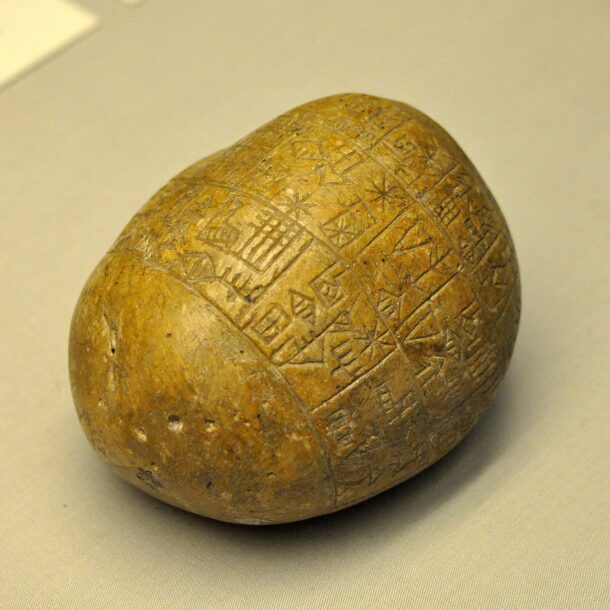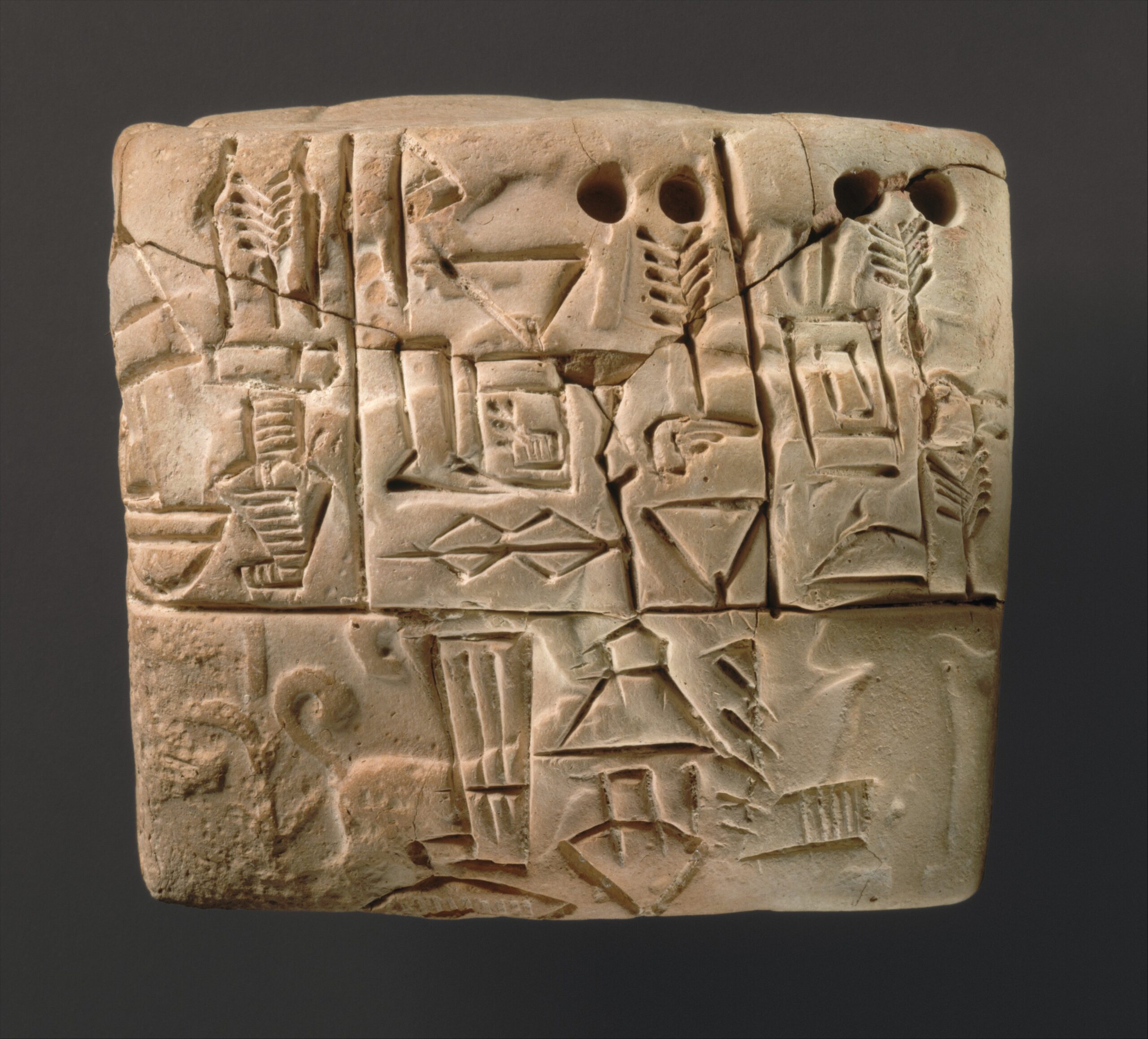Today we reach the Early Dynastic Period, where the kings are children of gods, or so they would claim. We’re going to see a lot of similar names from the dynasty of Ur-Nanshe, king of Lagash, who conquered the famous city of Ur (not to be confused with Uruk). Let’s run through the cast. Akurgal was the son of Ur-Nanshe and followed him as king. Akurgal had two sons, Eanatum who succeeded him, and Enannatum. When Eanatum died, Enannatum took over, and in turn passed on the mace to his son Enmetena (sometimes written as Entemena). Finally (for today), Enannatum II took over from his father, Enmetana.
If you lived in the neighbourhood of Sumeria in the 25th century BC, these guys were the definition of neighbours from hell. Warlike through five generations, these sons of Lagash had a particular thing for the neighbouring city of Umma and where exactly the border between the two should be drawn. In the course of this dispute, one of the earliest known organised battles took place, recorded on the Vulture Stele.
The Vulture Stele – so named for the vultures shown carrying off the heads of the defeated enemies – originally would have been a single slab of limestone, 1.8 metres high by 1.3 metres wide, with inscriptions on both sides. Sadly, what remains is fragmentary but still contains some interesting details about military history, including Eanatum leading his troops from a chariot, and then heading up an infantry phalanx armed with spears.
In a part of the story which I can only find on Wikipedia, during the battle Eanatum is said to have been hit in the eye with an arrow, but unlike the legend about Harold at Hastings, this guy survives and goes on to win. Other sources do support the fact that Eanatum was wounded by an arrow and fought on to victory, but that future echo from 1066 may only be in the mind of our Wikipedia editor.
It should be said that they weren’t all war-war-war. Our “tablet” today is actually an inscribed river-worn rock. In the inscription, Enannatum I reminds the gods of his temple building in Lagash. The dynasty of Ur-Nanshe firmly believed that the gods were in their corner, and the reverse of the Vulture Stele shows the god Ningirsu and goddess Ninhursag with a net full of naked male bodies, presumably the defeated fighters of Umma.
Eanatum was the first Lagash king to claim godly paternity, and his brother Enannatum would go on to do the same, with Eanatum also claiming that Ninhursag was his wet-nurse. Enmetena claimed the goddess Gatumdug as his mother. That assertion is possibly a little harder to carry off – there’s a good reason we don’t see many people on talk shows doing DNA tests for maternity.
Ending the dynasty, Enannatum II probably only reigned fort a short while. Not much is known about him, other than that he restored a brewery and was succeeded by a priest, bringing a relatively quiet end to the line of Ur-Nanshe.

